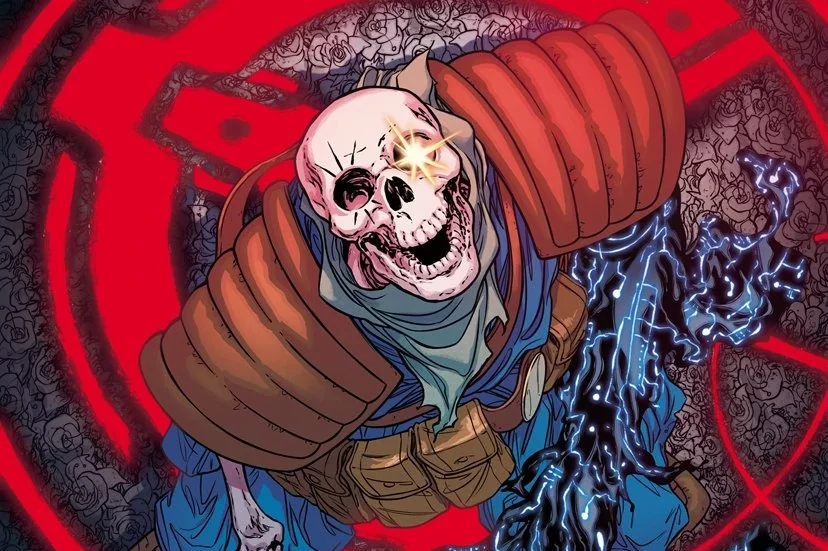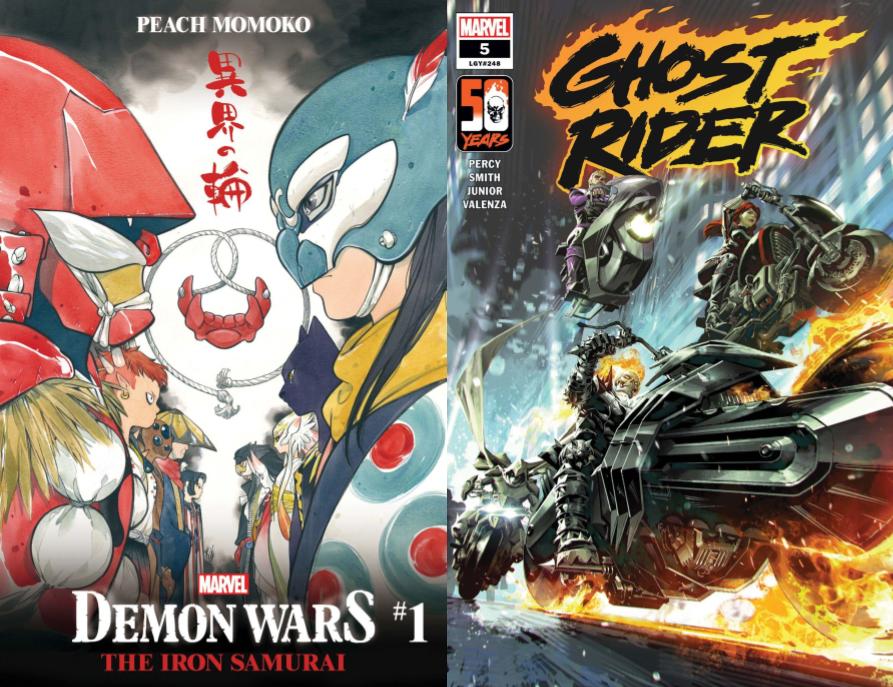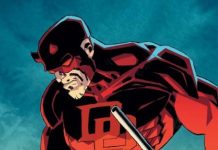The Rundown is back with an oversized edition tackling Immortal X-Men #5 and X-Men Red #5, the first two tie-ins to Marvel’s blockbuster summer event, A.X.E.: Judgment Day. The first issue of Judgment Day left some pretty big gaps as to what happened between panels: how did the Quiet Council fare against the Uni-Mind? And what really happened on Arakko?
This mega-review is stuffed full of SPOILERS, so skip below the break for rapid reviews on Demon Wars: The Iron Samurai #1 and Ghost Rider #5!
As always, give us your feedback and A.X.E. us any questions either down in the comments below or on social media @comicsbeat!
NOTE: While both issues are similarly structured to tie-in to Judgment Day, I’m of the opinion that the way each story flows lends itself to be read in the order in which the issues are reviewed below.
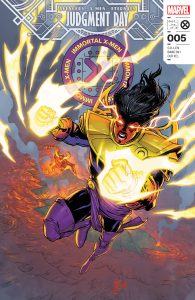
Immortal X-Men #5
Writer: Kieron Gillen
Artist: Michele Bandini
Color Artist: David Curiel
Letterer: VC’s Clayton Cowles
Design: Tom Muller and Jay Bowen
Look, I don’t think it’s crazy to say that I haven’t read a lot of comics with Exodus in them. Sure, I’ve read the big 90s stories he’s been in, like Fatal Attractions and Bloodties. And I’ve run across him in a couple of X-Men Legacy arcs, along with his more recent appearances as a member on the Krakoan Quiet Council.
But other than that? Nothing. Though his character has always had an interesting premise baked in, Bennet du Paris exists primarily as a background character, with under 150 appearances in Marvel comics. Aside from a one-shot co-starring the Black Knight in 1996, there hasn’t been a great case presented as to why we should really care about Exodus.
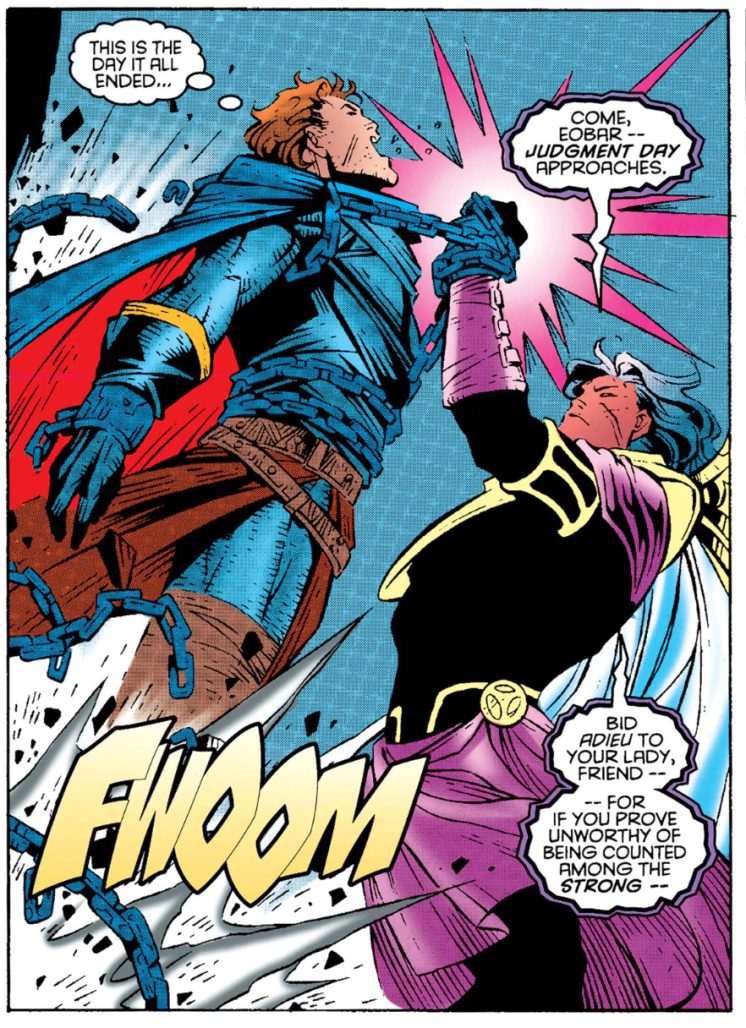
And, yeah ok, I still don’t really have any strong emotional attachment to Exodus after reading this issue. However, for the first time in over 25 years, it feels like we’re actually in the headspace of du Paris, to the point where he feels truly interesting for once.
Kieron Gillen and Michele Bandini take what we learned from that 1996 one-shot and completely recontextualize it to center Exodus in his own story (as opposed to the Black Knight). Along with this, Gillen fills in some gaps in Exodus’ more recent history and brilliantly fleshes out a brief scene from Judgment Day #1 that he didn’t have the space to write in that issue.
One of the most important things gleaned from this issue is just how Exodus’ religious beliefs operate. Much of the way he translates important mutant figures and ideas, like Apocalypse and the Phoenix, is derived from his understanding of Christianity as it existed during the time of du Paris’ birth — that being the 12th Century, smack dab in the middle of the Crusades.
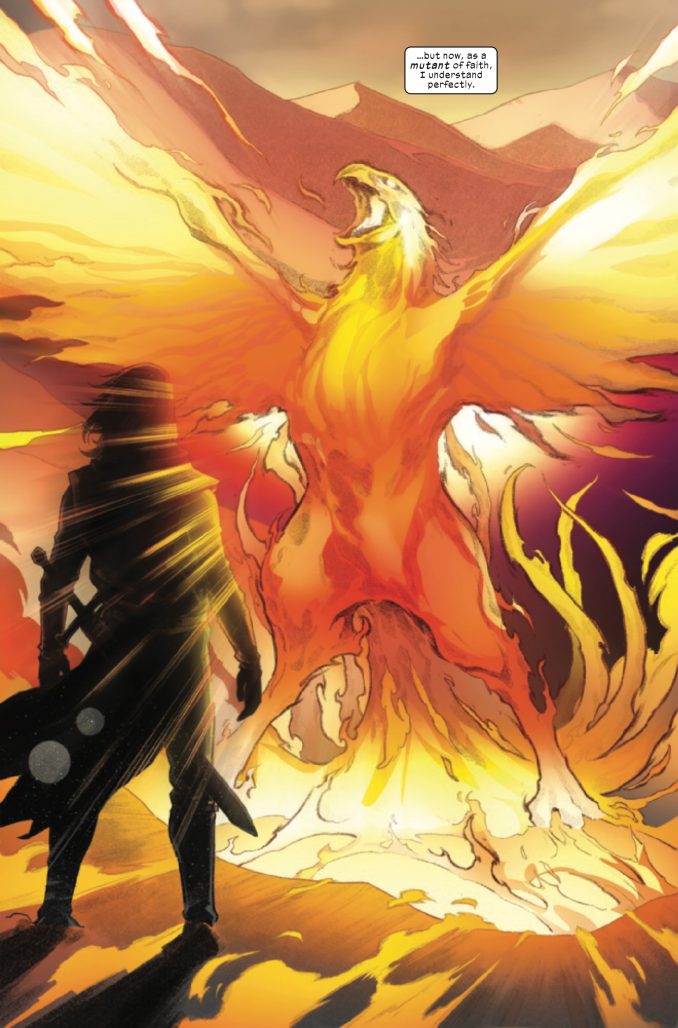
This is why he describes Hope Summers as the mutant messiah and likens the “X” in the X-Gene to the Cross. For Exodus, the Krakoan endeavor is akin to one of those Crusades (though, I hope, with far less violent results than the actual Crusades). He sees the world in service of a higher power, and with his mutant abilities to guide him, that higher power becomes the self-determination of the entire mutant race.
Along with all of this, we get a crucial scene expansion of the Quiet Council’s battle with the Uni-Mind, phenomenally illustrated by Bandini and David Curiel. Some panels bleed into the next, creating this intentionally jarring sensation that makes sense while we are watching Exodus’ mind as he fights the Uni-Mind. Bandini crafts a killer five-headed dragon for du Paris to defeat in the Astral Plane, while Curiel lights it up with a perfectly putrid shade of green.
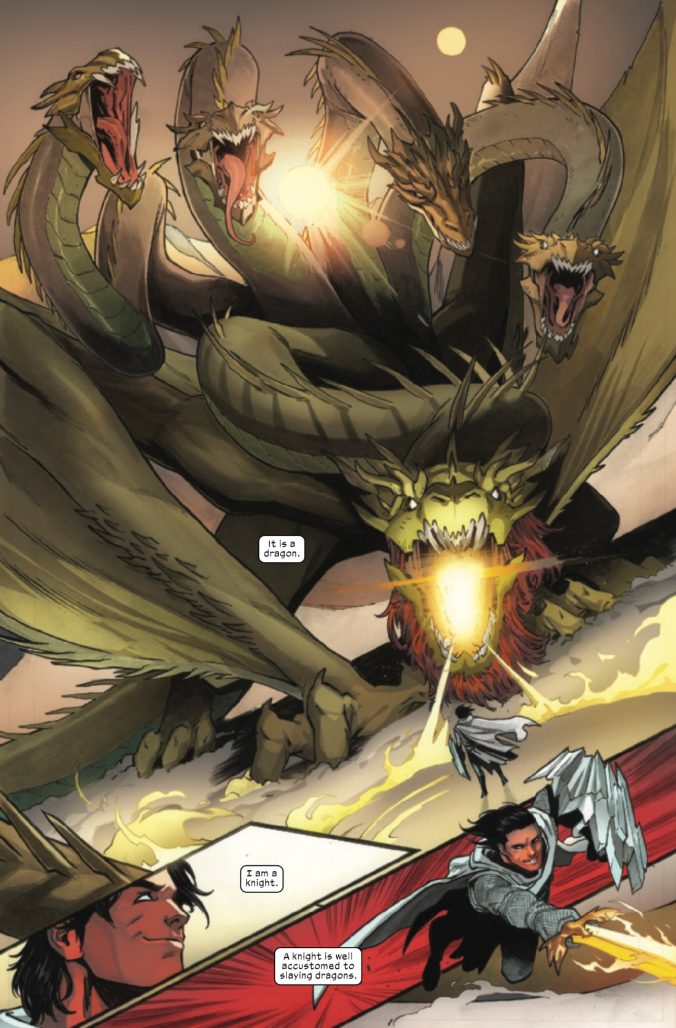
There’s an amazing data page in this issue that Jay Bowen and Clayton Cowles team up to create that marvelously merges together the Krakoan data page format with that of the pages found in Gillen’s Eternals series. It’s such a cool melding of the two aesthetics that really speaks to the power of this format as a narrative device (and something you’ll have to read in the issue to believe me about!)
Gillen has used each issue of Immortal to tell tales of the Quiet Council are able to both stand on their own as one-shots and act to broaden the Krakoan era and give immense insight into the heads of the leading figures of the mutant race.
Verdict: BUY. I can’t say you’ll like Bennet du Paris, but you will finally understand him.
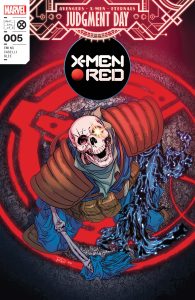
X-Men Red #5
Writer: Al Ewing
Artist: Stefano Caselli
Color Artist: Federico Blee
Letterer and Production: VC’s Ariana Maher
Design: Tom Muller w/Jay Bowen
When we last left Arakko, the mutants of The Planet Formerly Known As Mars were in a contemplative mood, questioning the very nature of death, the soul, and what resurrection really means in this bold new era. All was quiet, and it seemed as thought the seats of Great Ring of Arakko had finally ceased shifting.
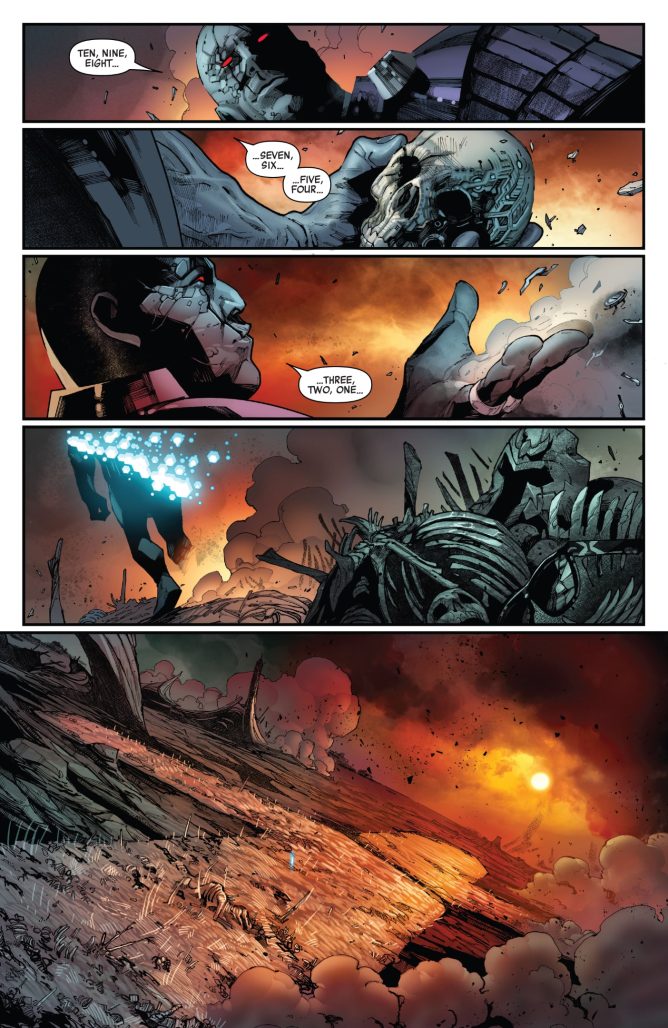
Well. Nevermind all that then.
In an issue reminiscent of the destruction of Genosha in Grant Morrison and Frank Quitely‘s New X-Men (but on a far, FAR grander scale), Al Ewing, Stefano Caselli, and Federico Blee annihilate the planet Arakko, as Uranos looks to correct excess deviation in the name of Druig’s Eternals.
It has to be said, Al Ewing is the master of the tie-in. Though the issue is a tie-in for A.X.E.: Judgment Day #1 (and is pulled straight from a couple pages in that first issue), this book works as a continuation of everything that came before, while still adding to the overarching narrative of what Ewing is doing on Arakko. There’s a great balance here between the needs of the event and the needs of the ongoing story that is normally difficult for writers to nail, but Ewing consistently has that in the bag.
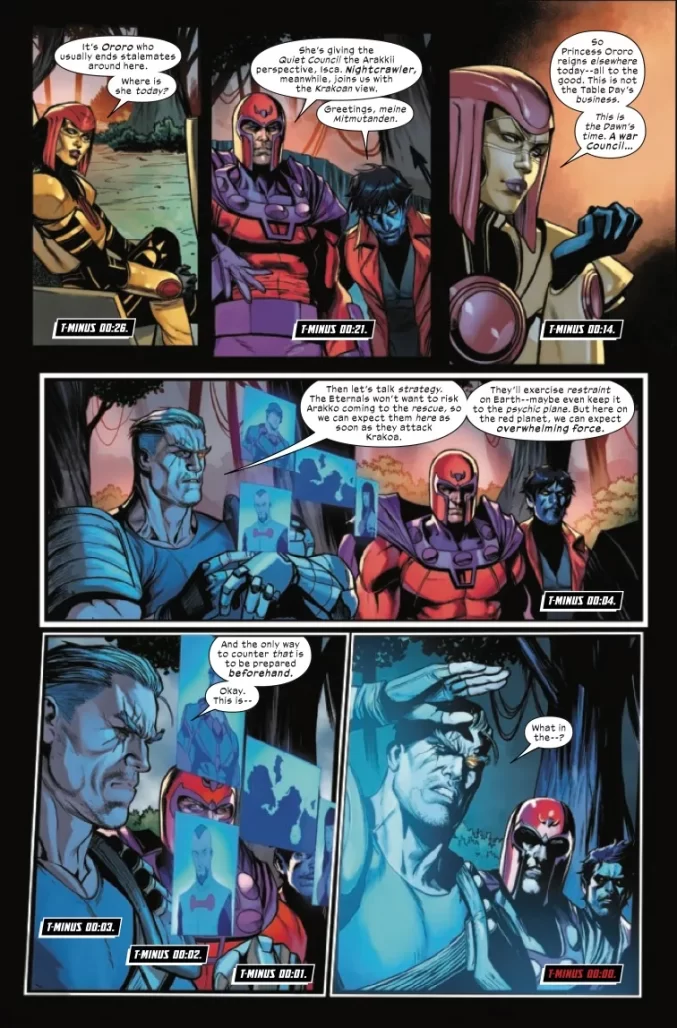
Ewing’s masterful control of pace, amplified by his use of a timer on each page, makes this issue devastating and honestly difficult to read at times. Ariana Maher‘s imposing letters do a lot to make that timer feel all the more bleak, merging with the rest of the page as seamlessly as possible. Uranos destroys so much in a brief span that it’s numbing to see all of the pain and hurt he causes by the end of this issue. Blee’s palette is gloomy and dour, with a pale blue twinge that creeps in at the start of the book and grabs a chokehold over the rest of the spectrum, almost as if Uranos is bathing Arakko in his misery.
This wouldn’t be the gut punch of a book it is without the work of Caselli. Most of the panels in this book look like dynamic live photos taken with an iPhone. The energy and kinetic motion feel like something is constantly happening, even when characters are standing perfectly still. His lines are thick and pop out, with a sense of detail that doesn’t leave much to the imagination, which is especially important in a book with as much horror as this.
While the destruction is disturbing, the characters in this book are really what make the issue (and the series as a whole) shine. Not only do we get to see marquee mutants like Cable and Abigail Brand shine through the pages (missing Storm though!), but the depth and care given to less well-known characters, like Isca and the Fisher King is fascinating and elevates this book beyond the premise of “mutants on mars”.
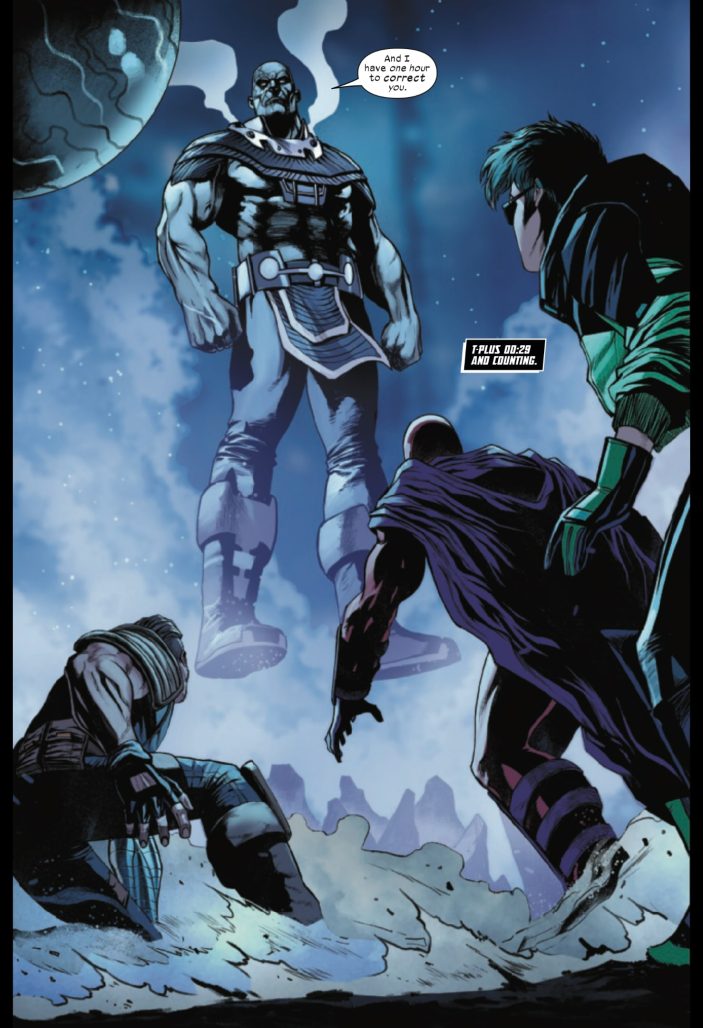
I have to give a shoutout to Ewing for his superb characterization of Magneto throughout this series thus far. Seeing Max grapple with his morality and come to grips with his age and shortcomings has been such a compelling plotline, and by the looks of this issue, it seems like he’s pushing Magneto to limits we haven’t seen him face maybe ever.
The last page of this is simultaneously one of the raddest and most intriguing cliffhangers I’ve seen in a long time, and I’m on the very edge of my seat wondering what the hell is going to happen next. Along with Immortal, X-Men Red has consistently been one of the very best series of the Krakoan era so far, and it feels like there’s a lot to look forward to here.
Verdict: BUY. In what could have been a two page scene in the main event, this book delivers a nauseating blow that should not be missed.
Rapid Rundown!
- Demon Wars: The Iron Samurai #1
- This issue, with story & art by Peach Momoko, co-scripted by Zack Davisson and with lettering by Ariana Maher, follows-up on the Demon Days miniseries, and its final-page revelation: that the events of this gorgeously rendered re-imagining of the Marvel Comics universe were not set in the “once upon a time,” but rather in a contemporary era. The Iron Samurai #1’s extra-long length gives the opportunity for a nice balance of action, narrative and thematic development, exposition, and the introduction of additional Marvel hero remixes. Plus, it continues the tradition of incredible art by Momoko (with color playing an especially integral role here), along with the tradition of informative back matter written by Davisson. Demon Wars is a thoughtful use of Marvel Comics continuity presented in a way that feels both faithful to the source material and at the same time completely fresh. If you buy only one Marvel comic this week… could you also pick-up a copy of the Gurihiru variant cover for this issue for me, too? Never hurts to have a back-up. —AJK
- Ghost Rider #5
- In a SyFy Wire interview, Ghost Rider writer Benjamin Percy said that his take on Johnny Blaze, Spirit of Vengeance, was influenced by David Lynch’s neo-noir film Blue Velvet and the way it showed the darkness just below the surface of “idealized Americana.” He also described himself as a “horror head” and fan of Stephen King, an influence seen throughout Ghost Rider #5 by Percy, Cory Smith, Oren Junior, Bryan Valenza, and Travis Lanham. With issue #4, the series really found its stride with the horror imagery and gore, and the creative team didn’t disappoint with the fifth book. Although each issue has leaned into a different horror genre (e.g., issue four did the classic evil circus clown meets Human Centipede-style body horror), Zeb acts as a unifying element throughout the story’s disparate parts… And I am reminded of the 1994 adaptation of King’s The Stand, and relatedly, William Butler Yeats‘ poem “The Second Coming,” after I watched it with my wife Avery Kaplan last night. The Spirit of Vengeance is turning and turning in the widening gyre [of fire]. One criticism I have at this point (it’s slowly becoming less of an issue as I learn more about the characters), the series introduces Agents Talia Warroad (a one-woman operation with a discretionary fund who hunts monsters) and Horace Whilmer (he’s the black-and-white, by-the-numbers, laws of physics, periodic table guy) of the FBI’s Paranormal Unit, a division that was formed when S.H.I.E.L.D. was dissolved and that’s responsible for investigating surges in supernatural activity. Much like the alien-chasing Fox Mulder is a foil to the skeptic Dana Scully in The X-Files, the monster-hunting Talia is a foil to the skeptic Horace. However, Horace’s role as the skeptic doesn’t subvert gender norms, and the dynamic between the two characters just doesn’t work as well as M&S. —ROK
Next week: Judgment Day proper returns, along with Ms Marvel and Wolverine and Moon Girl and The Avengers… and probably the X-Men!


